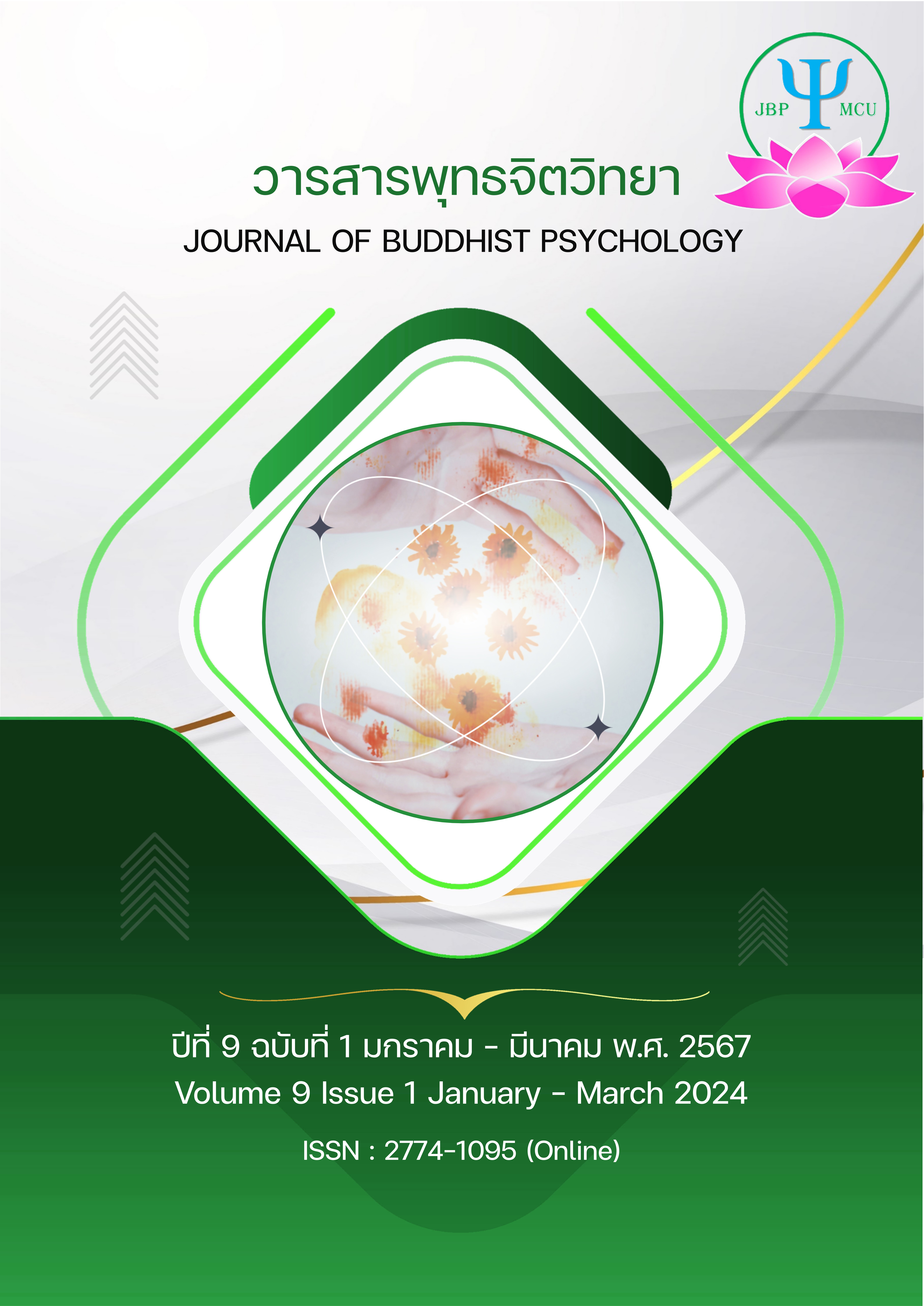An Administration Model to Quality Schools by The Smart School Model for Thetsabanthatum School
Main Article Content
Abstract
The objectives of this research were 1) to study the problems Needs 2) Design and Development model propriety by focus group 3) Implementation and 4) Evaluating of school administration. The sample group consisted of 73 teachers, Thetsabanthatum School. The instruments used in the research were (1) a document analysis form, (2) a questionnaire, (3) a focus group discussion issues and (4) Connoisseurship. Statistics used in data analysis These are the mean, percentage, and standard deviation form.
The results showed that: (1) the problem conditions and needs were found to be at a high level (2) The results showed that: (1) the problem conditions and needs from a sample group of 151 individuals,: Director, Teachers and Educational personnel and Stakeholders were found to be at a high level (=3.74) (2) The result of creating and developing an educational institution administration model with a group discussion process of 9 people to an educational institution management model that has a relationship of quality school components consisting of 4 components with 20 indicators; SMART Director, SMART Teacher, SMART Student and SMART Environment and the results of the evaluation of the appropriateness of the manual for the use of the Overall there was an average level of suitability at the highest level (
=3.70), (3)The results of the experimental use of the model showed that the administrative aspect of Thetsabanthatum School in 5 aspects of the task had the highest average level of satisfaction. It is at a high level in every way and (4) Assessment results certifying the quality of school administration model in terms of accuracy, propriety, feasibility and utility the average is at a high level (
=4.18).
Article Details

This work is licensed under a Creative Commons Attribution-NonCommercial-NoDerivatives 4.0 International License.
References
ณิรดา เวชญาลักษณ์.(2563). การประยุกต์ใช้ TQM ในการบริหารการศึกษา (พิมพ์ครั้งที่ 2). เชียงใหม่: วนิดา.
นงลักษณ์ วิรัชชัย.(2542). การสังเคราะห์งานวิจัยทางการศึกษาด้วยการวิเคราะห์อภิมานและการวิเคราะห์เนื้อหา. วิธีวิทยาการวิจัย, 12(2), 1-14.
พัฒนา พรหมมณี. (2560). แนวคิดการสร้างและพัฒนารูปแบบเพื่อใช้ในการดำเนินงานด้านการสาธารณสุขสำหรับนักสาธารณสุข (ฉบับอิเล็กทรอนิกส์). วารสารสมาคมสถาบันอุดมศึกษาเอกชนแห่งประเทศไทย ในพระราชูปถัมภ์ สมเด็จพระเทพรัตนราชสุดาฯ สยามบรมราชกุมารี, 6(2), 128-135.
รัตนะ บัวสนธ์. (2552). การวิจัยและพัฒนานวัตกรรมการศึกษา. กรุงเทพฯ: คำสมัย.
วิทยา จันทร์ศิลา. (2561). การบริหารเชิงกลยุทธ์สู่การพัฒนาคุณภาพการศึกษา. พิษณุโลก: รัตนสุวรรณ์.
วลินดา รสชา. (2563). รูปแบบการพัฒนาคุณภาพการบริหารสถานศึกษาควบรวม สังกัดสำนักงานเขตพื้นที่การศึกษาประถมศึกษา (ปริญญานิพนธ์ปริญญาดุษฎีบัณฑิต). มหาวิทยาลัยนเรศวร.
สำนักงานเลขาธิการสภาการศึกษา. (2560). รายงานการวิจัยแนวทางการพัฒนาการศึกษาไทยกับการเตรียมความพร้อมศตวรรษที่ 21. กรุงเทพฯ: สำนักงานเลขาธิการสภาการศึกษา.
อดิศักดิ์ ก่ำเชียงคำ.(2561). การพัฒนาประสิทธิภาพการจัดการงานกิจการนักเรียน โรงเรียนสนธิราษฎร์วิทยา สังกัดสำนักงานเขตพื้นที่การศึกษามัธยมศึกษา เขต 22 (วิทยานิพนธ์ปริญญามหาบัณฑิต). มหาวิทยาลัยราชภัฏสกลนคร.
อนันต์ ทองชันลุก. (2563). การพัฒนาสมรรถนะการปฏิบัติงานของบุคลากร กลุ่มงานพัฒนาสมรรถนะวิชาชีพและตำแหน่ง สถาบันพัฒนาข้าราชการกรุงเทพมหานคร. สืบค้นเมื่อ 15 พฤษภาคม 2564, จาก http://www3.ru.ac.th/mpa-abstract/files/2563_1614231848_6214830029.pdf
อรสา ทรงศรี. (2558). รูปแบบการบริหารกิจการนักเรียนแบบมีส่วนร่วมของโรงเรียนมัธยมศึกษาสังกัดสำนักงานเขตพื้นที่การศึกษามัธยมศึกษา (ปริญญานิพนธ์ปริญญาดุษฎีบัณฑิต). มหาวิทยาลัยนอร์ทกรุงเทพ.
อร่าม วัฒนะ. (2561). รูปแบบการบริหารสถานศึกษาสู่ความเป็นเลิศของโรงเรียนสังกัดองค์การบริหารส่วนจังหวัด (ปริญญานิพนธ์ปริญญาดุษฎีบัณฑิต). มหาวิทยาลัยราชภัฏนครสวรรค์.
Brounds, G., Yorks, L., Adams, M., & Ranney. (1994). Total quality management. New York: McGraw-Hill.
Crosby, P. (1980). Quality is Free. New York: Penguin Books.
Cumming, T.G., & Worley, C.G. (2013). Organization development and change (10th ed.). USA.: Cengage Learning.
De Cenzo, D.A.& Bobbins, S.P. (1996). Human Resource Management. 5thed. New York: John wiley & Sons.
Downey, C.J., Frase, L E., & Peter, J.J. (1994). The Quality Education Challenge. California: Crowin Press.
Kaufman, R., & Zahn, D. (1993). Quality Management Plus. California: Corwin p.
Krejcie, R.V., & D.W. Morgan. (1970). “Determining Sample Size for Research Activities”. Educational and Psychological Measurement, 30(3), 607 – 610.
Keefe, W.J. (1994). Leadership in middle level education. N.P.: Virginia National.
Keeves, P.J. (1997). Educational research methodology and measurement: An international handbook. Oxford, England: Pergamon.
Mathis, R. L., & Jackson, J.H. (1999). Human resource management. 9thed. Alabama: South-Western College.
Murgatroyd, Stephen & Morgan, Colin. (1993). Quality management and the school. Buckingham: Open University Press.
Oakland, J.S. (1989). Total quality management. London: Butterworth-Heinemann.
Oakland, J.S. (1989). Total Quality Management. 2nded. Oxford: Butterworth-Heinemann.
Rodger, C.G. (1999). Teacher participants of total quality management practices inlementary school. Dissertation Abstracts International, 30(7), 3709A-3710A.
Sashkin, M., & Kiser, K. J. (1993). Total Management to work. Sanfrancisco: Berrett-Kohler.
Smith, R.H. (1980). Management: Making organization perform. New York: MacMillan.


